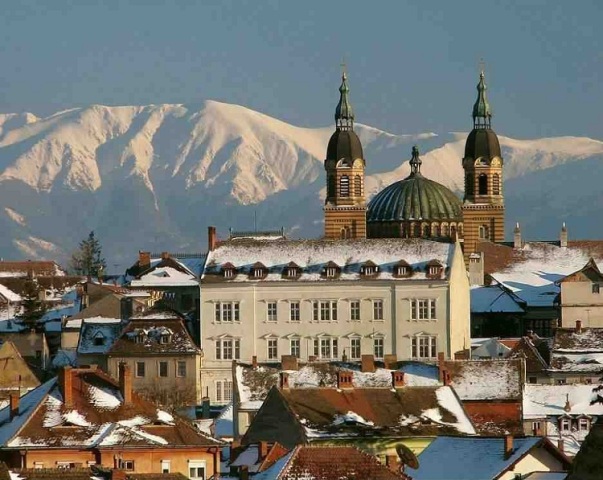A land of natural beauty, medieval monuments & modern pleasures, Romania is an important destination of Europe. To know more about the land, check out the fun and interesting facts below.
Facts About Romania
Romania is located in the Southeastern part of Europe, girdling the Black Sea between Ukraine and Bulgaria. It came into being when the two principalities of Moldavia and Wallachia broke the shackles of Turkish Ottoman suzerainty and merged, in 1859, to form a new land - ‘Romania’. Its name, ‘Romania’ is believed to have been come from Rome or the Roman Empire which represents the origin of the country. Surrounded by Hungary and Serbia to the west, Ukraine and Moldova to the northeast and Bulgaria to the south, Romania is home to the striking Carpathian mountain ranges that pass through its heart. One of the recent members of European Union, Romania also surprises its visitors with its striking contrasts such as its significantly developed cities and some which look like directly taken from the past. With its sun-kissed beaches, emerald forests, surrealistic history and medieval monuments, Romania remains a very popular tourist destination of Europe. To know more about the place, check out some fun and interesting facts given below.

Image: Camil Ghircoias@flickr
Fast Facts
Continent: Europe
Area: 238,400 km²
Capital: Bucharest
Population: 19,043,767
Currency: Romanian leu
Official Languages: Romanian
Independence Day: 9 May
Calling Code: +40
Type of Government:Unitary Semi-presidential Republic
Fun & Interesting Facts about Romania
- The capital of Romania is Bucharest, once popular as the ‘Paris of the East’.
- Romania is bordered by Ukraine in the North, Moldova on east, Black Sea in the South east, Bulgaria in the south, Yugoslavia in the southwest and Hungary in the West.
- Apart from the official Romanian language, Hungarian and German form two other major languages of Romania.
- Romania has a Republic type of government.
- The currency of Romania is Romanian ‘leu’ (RON).
- Romania's Danube Delta is a World Heritage site and is the second largest delta in the whole of Europe.
- The Dacian fortresses of the Orastie Mountains, in Romania, belong to the Late Iron Age.
- Gheorghe Marinescu, a professor at the Faculty of Medicine in Bucharest, was the first person to see living nervous cells with a microscope.
- More than half of Romania's Jewish population died in the Second World War.
- Romania was a part of the Council for Mutual Economic Assistance (COMECON) and the Warsaw Treaty Organization.
- After the Second World War, the Soviet Socialist Republic of Moldova was formed, which was earlier a part of Romania.
- Romania joined the European Union in 2007, along with Bulgaria.
- In the year 2000, 100 tonnes of cyanide, from a gold mine in northern Romania, spilled into rivers in Romania, Hungary and Yugoslavia and destroyed aquatic life for several hundred kilometers.
- The Transylvanian city of Sibiu is credited as the European Capital of Culture 2007.
- Irish author Bram Stoker based his horror novel ‘Dracula’ on the fifteenth century Wallachian Prince, Vlad Dracul of Romania.
- Romania’s ancestors are Dacians who were great warriors though they were defeated by the Romans under Trajan.
- Romania’s most prominent mineral resource is oil.
- Romania is the ninth largest nation in European Union by area. Its capital is Bucharest which is largest city in the country and the 6th largest in the European Union.
- Though the majority of Romanians are Christians, Romania does not have any official religion.
- The colors of the Romanian flag are red, yellow and blue which represent the blood of the people, grains which feed the people and the sky.
- The traditional sport of Romania is Oin which is unique and is similar to baseball.
- Romania is said to be the gateway to Middle East, Western Balkans and Caucasus region and has a prominent shipping port in Black Sea.
- The gypsies which form a good population in Romania have their representatives in Romanian parliament.
- Romania has witnessed the rise and fall of numerous empires such as Romans, Ottomans and Austro-Hungarians.
See also
More from iloveindia.com
- Home Remedies | Ayurveda | Vastu | Yoga | Feng Shui | Tattoos | Fitness | Garden | Nutrition | Parenting | Bikes | Cars | Baby Care | Indian Weddings | Festivals | Party ideas | Horoscope 2015 | Pets | Finance | Figures of Speech | Hotels in India : Delhi | Hyderabad | Chennai | Mumbai | Kolkata | Bangalore | Ahmedabad | Jaipur
- Contact Us Careers Disclaimer Privacy Policy Advertise With Us Lifestyle Sitemap Copyright iloveindia.com. All Rights Reserved.







